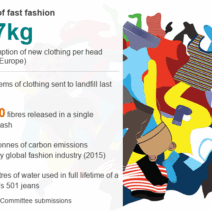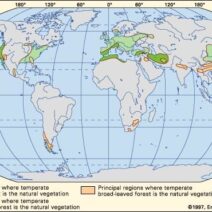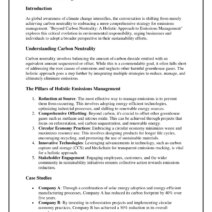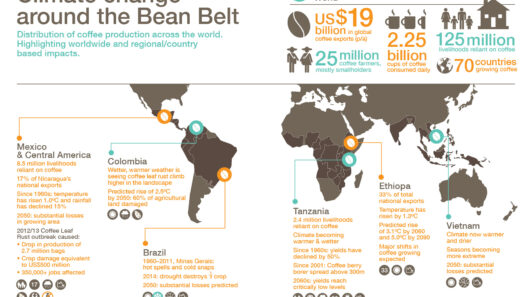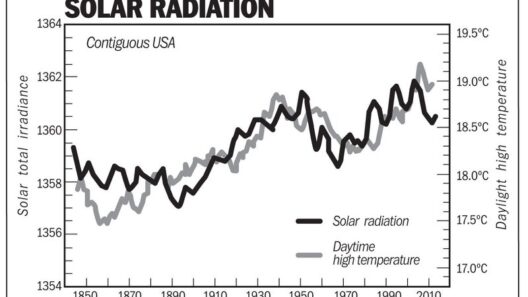When we think of Florida, images of white sandy beaches, balmy temperatures, and endless summer days often come to mind. It is a state synonymous with sunshine and warmth, attracting millions of visitors seeking refuge in its tropical climate. However, Florida has recently experienced weather phenomena that challenge these long-held perceptions, such as the perplexing occurrence of snow—a phenomenon virtually unheard of in the Sunshine State. This anomaly raises important questions about the overarching realities of climate change and its far-reaching effects on weather systems across the globe.
At the core of this discussion is the intricate relationship between climate change and extreme weather. Climate change, primarily driven by human activity such as burning fossil fuels and deforestation, is causing shifts in global temperature averages. While it might seem counterintuitive, warming temperatures can lead to conditions that generate atypical weather events, including unexpected snowfall in regions typically spared from such phenomena. The increasing frequency and intensity of extreme weather is a poignant reminder that climate change does not manifest uniformly; rather, its ramifications can be paradoxical.
The recent instance of snow reported in Florida serves as an illustration of how climate change can disrupt established weather patterns. The Polar Vortex—a significant atmospheric phenomenon—often influences weather across the United States, driving frigid Arctic air southward. When these cold air masses coincide with moist, warm conditions, unusual winter weather, including snow, can emerge even in the most unexpected locales. In Florida, the juxtaposition of warmth against sudden cold can create the surreal experience of snow falling against a backdrop of palm trees.
This “bizarre weather” serves as a harbinger of the unpredictable climate of the future. As average global temperatures rise, scientists predict an increase in the frequency of sudden and extreme weather events. Areas that have historically seen mild winters may experience harsher conditions, while places accustomed to snow may witness less of it, a phenomenon known as climate variability. This unpredictability underscores the importance of understanding climate change in a comprehensive manner—not merely as a gradual increase in temperatures, but as a complex interplay of numerous environmental factors.
Moreover, the implications extend far beyond mere curiosities for weather enthusiasts. The ramifications for ecosystems, agriculture, and human health are profound. Snow may temporarily transform the landscape, but such events can have deleterious effects on crops that are more sensitive to abrupt changes in temperature. Furthermore, the stress placed on natural ecosystems can lead to new challenges for wildlife populations that may not adapt quickly enough to the shifting climates. Flora and fauna enduring stress from climate-induced alterations may find it increasingly difficult to thrive in their traditional habitats.
Individuals and communities must start to grasp not only the immediate disruptions caused by anomalous weather conditions but also the longer-term implications for resilience, adaptation, and sustainability. For instance, as Florida grapples with the ramifications of climate change, local governments and municipalities are increasingly focusing on developing comprehensive climate action plans that account for both mitigation and adaptation strategies. These may include enhancing infrastructure to withstand heavy rainfall and flooding, encouraging sustainable agricultural practices, and investing in renewable energy sources to reduce reliance on fossil fuels.
Educational initiatives play a pivotal role in fostering a deeper understanding of climate systems and the socioeconomic implications of disrupting those systems. Public awareness campaigns can elucidate the causes and consequences of climate change while mobilizing individuals toward sustainable practices. Grassroots organizations and community groups can serve as powerful conduits for enacting localized changes—and addressing the overarching challenges posed by climate change—by providing resources, organizing clean-up efforts, and advocating for policies aimed at environmental preservation.
On an individual level, actions toward sustainability can contribute to broader efforts to mitigate climate change. Simple changes in consumer behavior, such as reducing energy consumption, utilizing public transportation, or choosing locally sourced products can cumulatively yield significant impacts. Participating in reforestation efforts and advocating for policy changes that prioritize environmental protection can empower individuals to contribute actively to the fight against climate change. Awareness of how daily questions regarding consumption and sustainability intertwine with broader ecological issues can catalyze meaningful action.
As anomalous weather events become increasingly prevalent, we must acknowledge our responsibility as stewards of the planet. The bizarre instance of snow in Florida represents more than just a fleeting spectacle; it is a stark reminder of the unpredictable realities we face in a warming world. By recognizing the interconnectedness of climate systems, embracing sustainability, and advocating for resilient practices, we can begin building a future that honors the delicate balance of Earth’s ecosystems.
Ultimately, the challenge of climate change is enormous and complex, but not insurmountable. Awareness, action, and community engagement are vital components in steering our trajectory toward a more sustainable future. Learning from phenomena such as snow in Florida can inspire a proactive approach to global warming, galvanizing collective efforts to mitigate its impacts and cultivate a world where environmental integrity prevails. The bizarre weather patterns of today can inform the actions of tomorrow—if we choose to heed the warnings they present.
